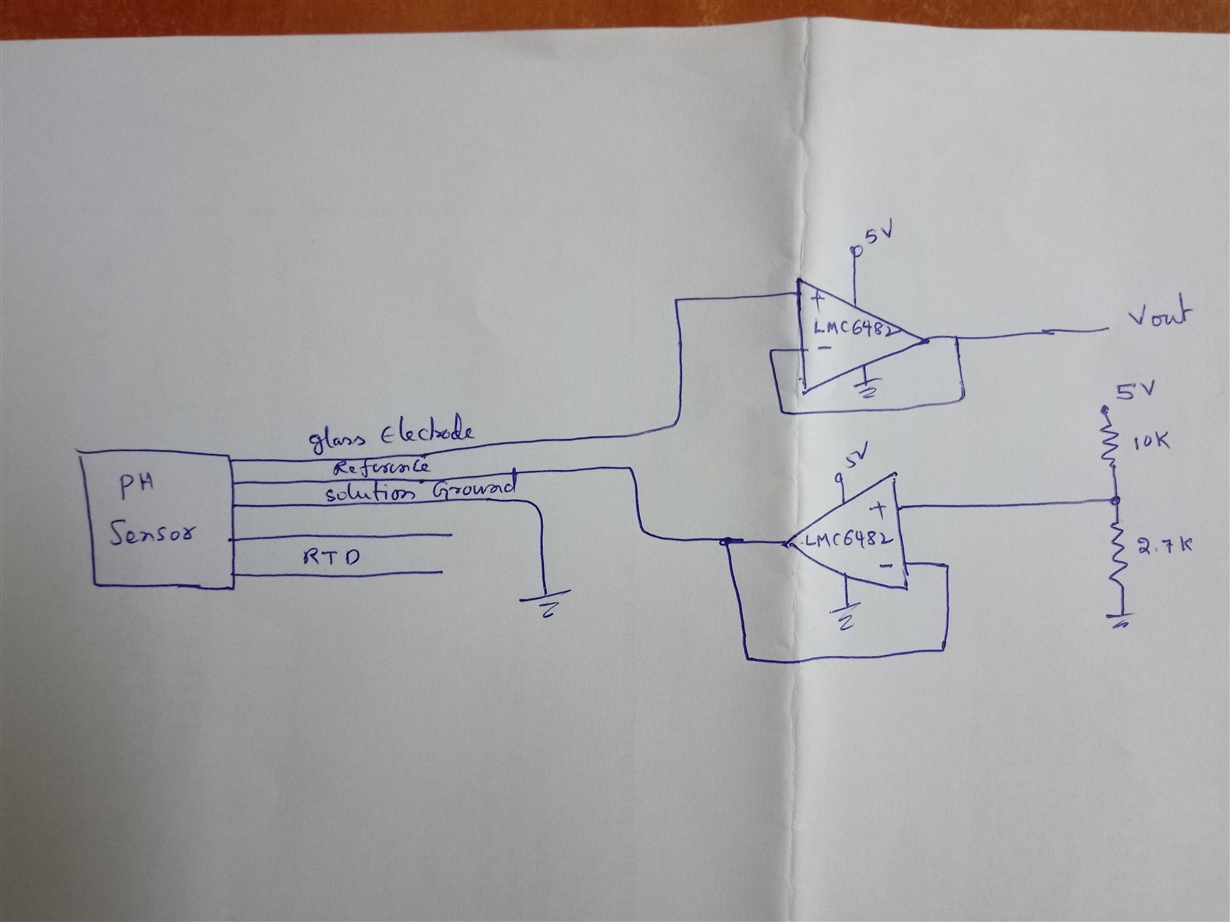Other Parts Discussed in Thread: TINA-TI, , LMC662, LMP7721, OPA376, OPA191, OPA197, LMC6482
Dear Sir/Madam,
I am working on pH electrode amplifier . Planning to use one of the op-amps "LMC6082C" or LMC662C or LMC6482 which have fA input bias current. Attached circuits and simulated results using Op-amps "LMC6082C" and "LMC662C" in TIna-TI.
LMC6082C is giving delta value between 1.8mV to 5mV for pH glass electrode source resistance 50M to 500M ohms.
LMC662C is giving delta value between 6m to 9mV for pH glass electrode source resistance 50M to 500M ohms.
In case of LMC662 input bias current of 2fA (High compared to LMC6082) , still delta is more (6m to 9mV). In case of LMC6082 input bias current of 10fA , delta is less(1.8mV to 5mV).
Please give your valuable comment.
1. Also give comment on schematic , is it better to go for proto design. Any comoponents yet to add???
2. Also which opamps is better to go for proto design.
Thanks
Srinivas



